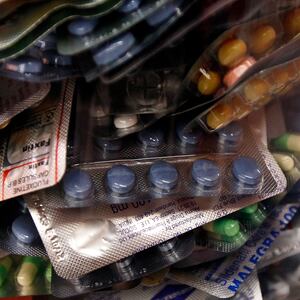Scientists have once again created a new tool in the stiff battle against erectile dysfunction—and this time, it doesn’t involve a pill.
Researchers in China published a study in the journal Matter on Jan. 4 where they created an artificial tissue that restored erectile function in pigs. The material, dubbed artificial tunica albuginea (ATA), imitates the tunica albuginea tissue in penises that’s used to create and maintain erections. The team believes that it could one day help humans recover from their own injuries—not just for penises, but also critical organs like the heart.
“We largely foresaw the problems and results of the ATA construction process, but we were still surprised by the results in the animal experiments, where the penis regained normal erection immediately after the use of ATA,” Xuetao Shi, a biomaterials researcher at the South China University of Technology in Guangzhou, China and a co-author of the study, said in a statement.

The researchers were drawn to biomaterials as a solution after recognizing that 5 percent of men who experience erectile dysfunction suffer from Peyronie’s disease, which creates scar tissue in the tunica albuginea and can cause erectile dysfunction due to pain. While doctors can treat it by using tissue from other places on the patient’s body, the body occasionally rejects it—creating further complications for the patient.
That’s why the team turned to creating ATA using polyvinyl alcohol, a substance that has a similar structure to human tissue. It was also engineered to be accepted by the body and not harm the surrounding tissue.
They then tested it in pigs that had tunica albuginea injuries. The ATA patches restored erectile functions in the creatures, who achieved normal erections after their penis was (horrifyingly) injected with saline. However, Shi notes that it wasn’t completely perfect as the patch didn’t restore the surrounding natural tissue. But the ATA group did get good repair results.
The researchers now believe that the ATA could provide a platform for potential tissue repair systems for other organs such as the heart—giving it a long range of applications.
“The greatest advantage of the ATA we report is that it achieves tissue-like functions by mimicking the microstructure of natural tissues,” Shi said. “This design approach is not limited to the biomimetic design of tunica albuginea tissues but can be extended to many other load-bearing tissues.”
We’ll let you decide whether or not that last part was a pun.







